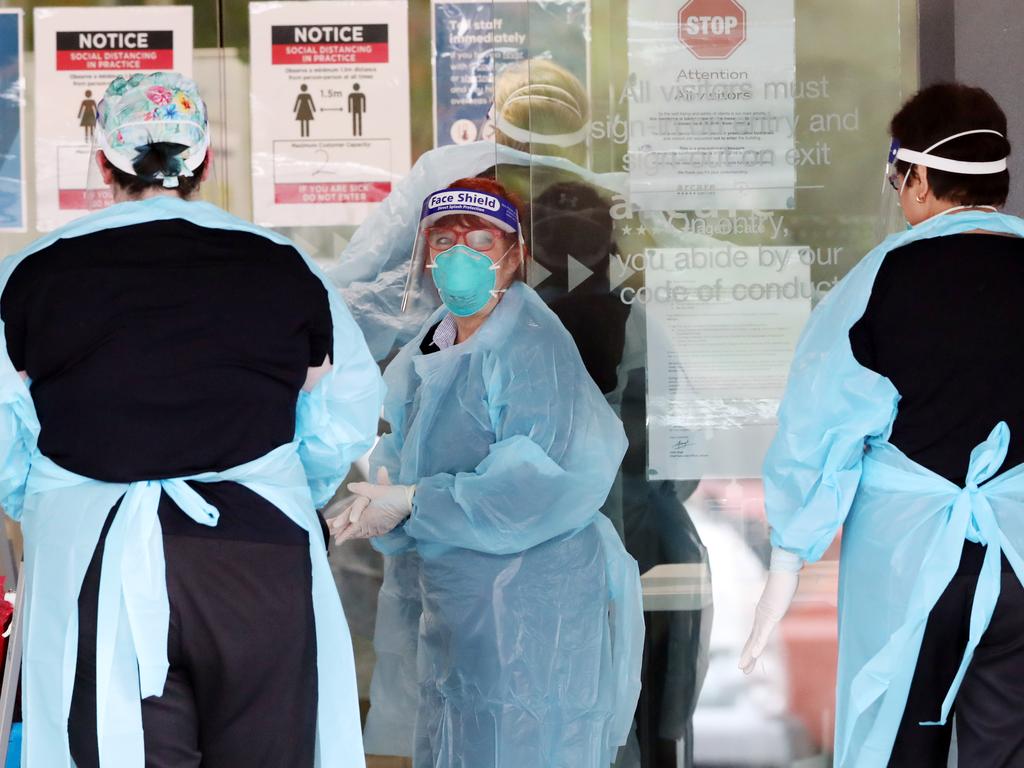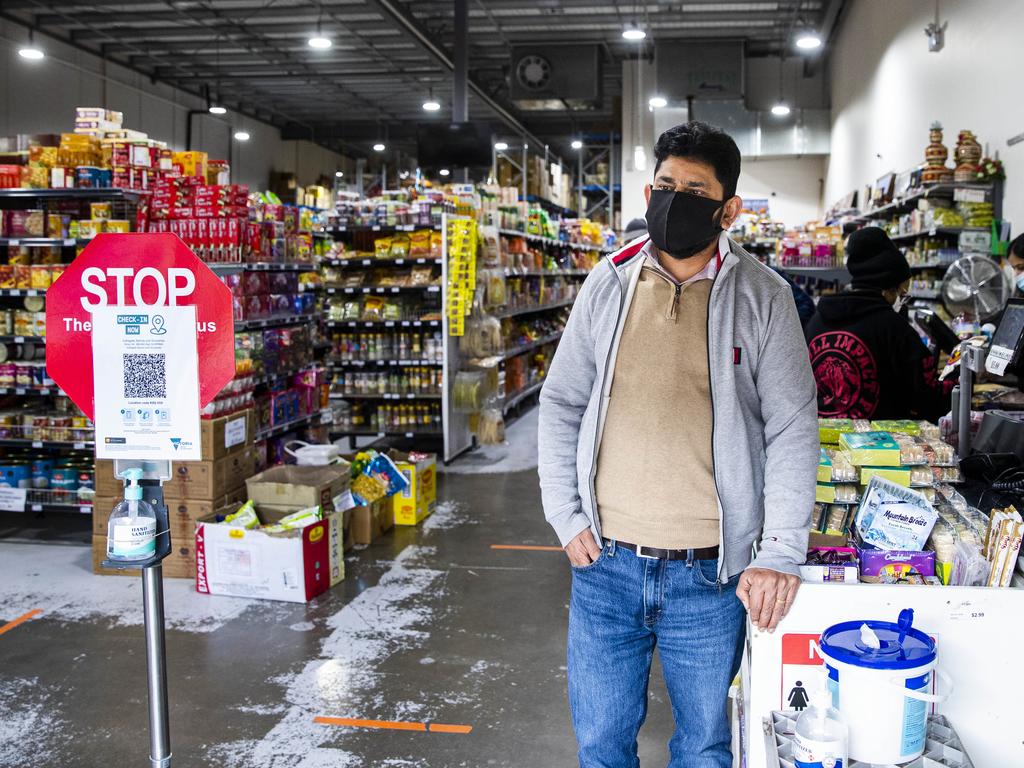Stranger-to-stranger Covid-19 danger alarms tracers
The Indian strain behind Melbourne’s Covid-19 outbreak is suspected of ‘stranger-to-stranger’ infection after it spread by fleeting contacts.

The Indian strain behind Melbourne’s Covid-19 outbreak is suspected of “stranger-to-stranger” infection after it spread by fleeting contacts in a Telstra store, an Indian grocery, a display home and a shopping centre.
Victoria contact tracing commander Jeroen Weimar sounded the alarm on the B.1.617.1 variant on Tuesday as health authorities urged anyone who had been to 10 popular shopping sites across the city to undergo testing.
He said he was concerned by four instances in which it appeared the virus had jumped from one person to another through fleeting contact. “What we’re seeing clearly is people who are brushing past each other in a small shop,” he said.
“They’re going around a display home, they’re looking at phones in a Telstra shop. This is relatively fleeting. They don’t know each other’s names.”
Warnings about the virus’s infectiousness came as towns in southern NSW were put on alert after a Victorian traveller returned home and tested positive to Covid-19. NSW Health on Tuesday night issued a list of exposure sites in Hyams Beach, Vincentia and Jervis Bay on the south coast and in the southern tablelands city of Goulburn for May 23 and 24.
The fleeting transmission cases occurred at a Telstra store in South Melbourne, JMD Grocers and Sweets in Epping, a display home in Mickleham and at the Craigieburn Central mall.
Chief health officer Brett Sutton said the rapid transmission of the Indian strain had forced health authorities to re-examine more than 300 exposure sites, saying many people would die if the virus was allowed to circulate amid a largely unvaccinated population.
“I’ve described this virus as an absolute beast because it has moved faster than any other strain we’ve dealt with and we’re seeing transmission in settings and circumstances we’ve never seen before,” he said.
“This means we’re having to re-examine exposure sites, more than 300 of them, with this more contagious strain in mind.”
Health authorities are particularly concerned after several positive cases moved around busy shopping sites including Craigieburn Central, Bay and Graham streets in Port Melbourne, Clarendon St in South Melbourne and South Melbourne markets, Pacific Epping also known as Epping Plaza, and the Epping North Shopping Centre.
Anyone who visited Footscray Market, Dandenong Market and Sanctuary Lakes Shopping Centre and Stockland Point Cook in the past two weeks is also urged to undergo testing.
Mr Weimar said Victoria’s three new cases had been genomically linked to a man who returned to Melbourne after contracting the virus in hotel quarantine in South Australia but the point of transmission for one remains under investigation.
In another example of the new strain’s potential potency, Mr Weimar said a man who lived near the workplace outbreak at Stratton Finance in Port Melbourne visited several coffee shops at the same time as infected workers.
“What we see here is another individual who has had relatively infrequent, relatively fleeting contact with what we think are a couple of people over two days and that appears enough to get this infection across.”
Infectious disease experts on Tuesday said the instances of transmission through fleeting contact could be attributed as much to improvements in contact tracing and bumper testing numbers as the increased infectiousness of the Indian strain.








To join the conversation, please log in. Don't have an account? Register
Join the conversation, you are commenting as Logout